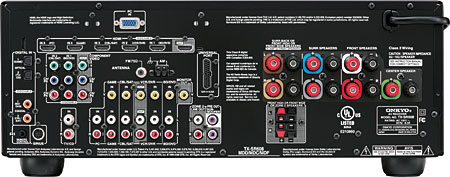HDMI to Infinity and Beyond
In 2002, the video world was just getting comfortable with component analog video. HDTV and DVD were only starting to acquire mass-market status. We were using three separate video cables to connect our shiny new HDTVs to our best sources. Add to that up to six audio cables to our A/V receivers. This forest of cables wasn’t heaven (except to cable vendors), but it worked, and it provided most viewers with their first real taste of high-quality video. We also had DVI, a standard for digital video borrowed from the computer world. But because its clunky connector only carried video and not audio as well, it never achieved critical mass.

Then along came High-Definition Multimedia Interface (HDMI) and its promise of a single cable from source to AVR to display for both audio and video. There were other contenders in this battle, including FireWire, but the scuffle was short. HDMI won the day. Today some 800 companies worldwide are HDMI licensing adopters and affiliates.
What HDMI Offers and What It Doesn’t
HDMI promised not only simpler system connections, but two-way communication between components and displays. Two-way communication offered consumers potential advantages in system automation. But its key attraction was to content providers, as it offered the opportunity for improved copy protection. Without this, studios would have been reluctant to release material that offered near-master-quality video and audio into the marketplace.
Despite its promised advantages, HDMI wasn’t initially free of operating glitches. Nearly all of these were related to the two-way handshake between components and displays—a transfer of information that must be completed before a signal lock-on can be established. The information exchanged, known as Extended Display Identification Data (EDID), can be relatively benign. It could include the display’s optimum resolution, the color space the display expects to see (component Y/Cb/Cr or RGB), or whether or not the set is 3D capable and what 3D format is involved.
Some of the requested EDID information is genuine secret-agent stuff. It involves the copy protection that’s near and dear to the hearts of film studios everywhere. For example, if the display or intermediate passthrough device (such as an A/V receiver) isn’t compliant with High-Bandwidth Digital Content Protection (HDCP, one of the major copy protection schemes used with HD sources), the system won’t complete the handshake.

Many of the problems weren’t HDMI’s fault. They resulted from a failure to anticipate the overall connection environment (either by HDMI or by the manufacturers of the products in which it was used). HDMI issues haven’t disappeared entirely, but things have steadily improved thanks to an often bewildering range of HDMI revisions.
It all started with HDMI 1.0 in 2002 and moved steadily on up to the current versions: HDMI 1.4 and 1.4a. HDMI 1.0 gave us up to 1920-by-1080 resolution at up to 60 hertz, but only for 8-bit-per-color video (24 bits total for the three primary colors in the video signal). It could carry eight channels of linear PCM audio at resolutions of up to 24 bits/192 kilohertz.
Along the way, we passed through several intermediate HDMI iterations that added support for DVD-Audio and SACD and increased the video resolution the system could carry.
As we arrived at HDMI 1.3, we had more than double the video bandwidth, which allowed passage of full high-definition video at up to a 60-Hz refresh rate and up to 16-bit (48-bit total) video. No consumer sources are higher than 8-bit video, but some components and displays can upconvert incoming video signals to higher bit depths or transmit/process video signals upconverted to Deep Color. HDMI 1.3 also carries lossless audio in the form of Dolby TrueHD and DTS-HD Master Audio in bitstream form. It also supports Deep Color, xvYCC color, and Auto lip sync.
In short, as it progressed from version 1.0 through version 1.3, HDMI gave us increasingly wider video bandwidth plus the ability to pass all current forms of multichannel high-resolution audio available to the consumer. Some of its additional capabilities, such as Deep Color and the xvYCC color gamut, have seen very limited use so far.

Please Sir, Could I Have Some More?
As always, enough is never enough, and HDMI version 1.4 was announced in 2009. While HDMI 1.4 offers a number of benefits, the big kahuna is 3D.
According to HDMI, a product doesn’t need to support all of the features that HDMI 1.4 offers to be classified as HDMI 1.4. It must come equipped with the appropriate HDMI 1.4 chips and either an HDMI 1.4 transmitter (for a source, such as a Blu-ray 3D player), receiver (for a display), or both (such as an A/V receiver with HDMI 1.4 switching). The features must also be programmed into the chips, which is up to the manufacturer of the product involved. Beyond the chips, the product doesn’t have to offer all HDMI features out of the box. Before you write the check, be sure to check that any HDMI 1.4 component you are considering offers the HDMI 1.4 features you need, such as the ability to pass a 3D signal. Some products may ship with promises of future firmware updates to include additional 1.4 features, but don’t be surprised if deliveries of such updates are snail-slow. When engineering is involved, deadlines are rarely ironclad.
- Log in or register to post comments



















































